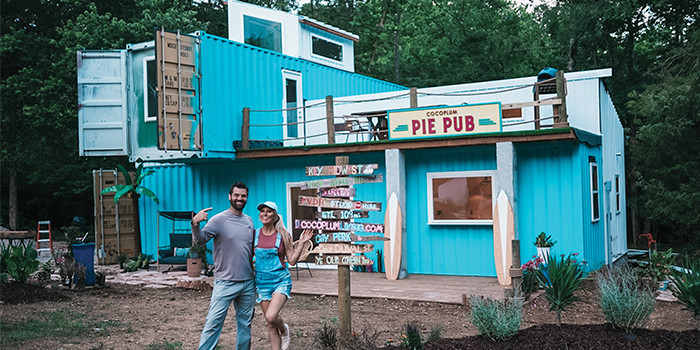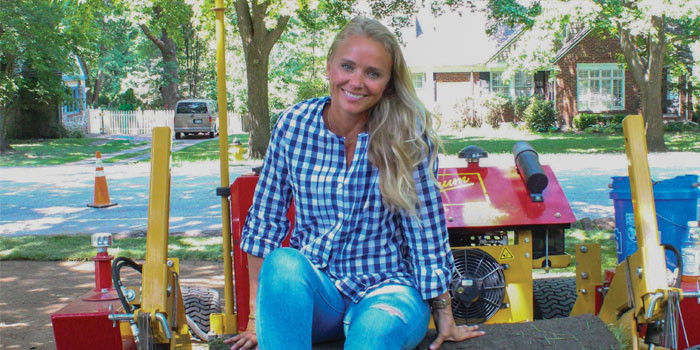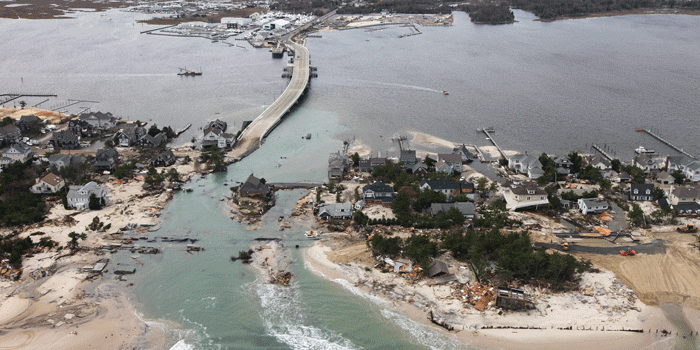
Rebuilding After a Superstorm

Spray Foam Magazine – Show Issue 2020 – Hurricane is a word that conjures up images of mass panic-buying at the grocery store, lines for gas, and a large exodus from the rumored eye of the storm. It can all occur before one even knows if the hurricane will actually hit their immediate area. However, there is a very real and devastating effect to a location, which receives a direct hit. Spray Foam Magazine spoke to locals from a town in New Jersey, who experienced the ultimate destructive power of a major hurricane. We wanted to know exactly what happened in the aftermath of Hurricane Sandy and how the rebuilding effort is still underway, with the use of materials like spray foam insulation.
FEMA has acknowledged there are several flood resistant building materials: pressure-treated wood, corrosion resistant coated steel, epoxy formed-in-place flooring, and closed-cell spray foam. According to FEMA, closed-cell spray foam is considered a class 5 (flood resistant materials are graded a 4 or 5) building material and within these recommendations, they suggest it can be used in walls, ceilings, and floors.
Closed-cell spray foam sets into a firm solid, which strengthens a building’s overall structure, unlike other forms of insulation. Another benefit against storms is its water resistance, which can form a seal, rather than act like a sponge.
Open-cell foam has its place, but it is not recognized for water-resistant qualities. Instead, it is great for filling nooks and crannies and lowering noise frequencies. It is lightweight and pliable, so it proves easy to form, with a high expansion rate compared to closed-cell foam.
Coastal Insulation was founded in 1975, and it is a full service insulation company serving residential and commercial customers in New Jersey, New York, and Pennsylvania. They have a reputation for always putting their customers’ needs first. Their mantra is to create energy efficient buildings, which are comfortable and save their clients money. They have kept this philosophy at the front of their minds when helping on rebuilds and new builds, along the worst hit areas of the Jersey Shore.
Vice President of Coastal Insulation, John Achille, emphasizes the recommended guidelines following the storm, “Architects are specifying spray foam, specifically closed-cell foam, because it is one of the only insulations listed as FEMA approved to be used in areas that are below design flood elevations. Many of these raised homes or new homes have entryways, which are conditioned and need insulation. The increased structural strength, energy efficiency, and comfort provided with a spray foam closed attic assembly is favorable for our high-wind areas along the shore.” Achille and his team often use Lapolla’s closed-cell FL2000 4G and their open-cell FL500.
Hurricane Sandy, aka “Superstorm Sandy,” caused 147 deaths throughout the Caribbean, Canada, and the northeastern part of the United States, with 60 of those occurring in New York and New Jersey. The Jersey Shore received overwhelming damage from the storm, which obliterated many of the island’s protective defenses, homes, boardwalks, and boats.
Hitting with a mammoth-sized fist of destruction to the barrier island linking the well-heeled borough of Mantoloking, NJ to the surrounding area, the superstorm momentarily split the community in two. It destroyed numerous multi-million dollar homes and left the entire area a disaster zone.
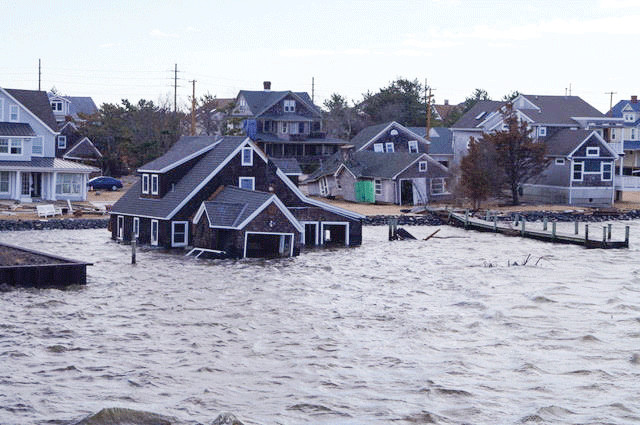
When the residents of Mantoloking received news they were in the path of Sandy, many evacuated their homes and headed inland. There were a few that stayed behind, including Edwin O’Malley, a well respected realtor in the area. Ed, as he likes to be referred to, thinks back to the night the storm rolled into town. “Lying in bed, I could actually hear waves hitting the side of the house, which obviously made it more difficult to get to sleep. The ocean washed into our living room and reached the level of our couch seats and then withdrew.” Ed, noted how they had actually been lucky because many more houses had been destroyed or even washed away. The next morning, Ed, along with his father who also hunkered down in the house too, looked out of Ed’s east window towards the ocean and knew that things were bad. Ed recalls, “The houses that usually block our view of the ocean were gone and all we could see were the crashing waves.”
The big question for the local residents was: should the homes and buildings of the area be rebuilt as they were before?
Ed O’Malley’s home was built in the 1880s, with elevated foundations being rebuilt in 1972. According to FEMA, Flood Protection Elevation (FPE) is the most common retrofit to protect against future floods. Although the foundations are exposed to flooding, the living area is raised safely above. A full breakdown of these methods can be found at FEMA.
New York photographer, Peter Hurley, was also living in Mantoloking, when he evacuated just before the storm rolled in. “Mantoloking has a sweet spot in my heart after spending every Summer of my childhood there. When Sandy hit, I was eager to go and see the damage the storm had caused to my family home.”
One of the first evacuees back on the scene, Peter recorded the devastation. He obtained a small inflatable boat in Toms River and drove up the coast towards Mantoloking. He recollects, “It was cold and quiet and when I reached the Mantoloking Bridge, I was shocked to see the devastation and the breach caused by the storm, with the ocean flowing directly into the bay on the north side of the bridge. My father’s house is 10 houses north of that and when I arrived, I was greeted by an officer standing on my neighbor’s dock. He was holding a machine gun shouting at me that I couldn’t go on my property because Mantoloking was under Martial Law.”
Peter quickly left that particular area and went to survey the rest of Mantoloking from the bay side. He was saddened to see the entire strip of land was a mess, with each home having received significant damage. He even had to navigate his way around one home, which had been blown off its foundations and into the bay.
Peter eventually found what was left of his house, “It wasn’t a pretty sight. There was a ton of debris around the house and it was like an obstacle course getting up to the beach. I remember ducking under the fallen electrical wires and a powerful smell of gas. I went as quickly as I could to capture the video and get out of there. I remember the outpouring of thanks I got from capturing the video from those who couldn’t get to their homes. I even stumbled upon a safe and the police were able to use the video to secure its contents for the owner.”
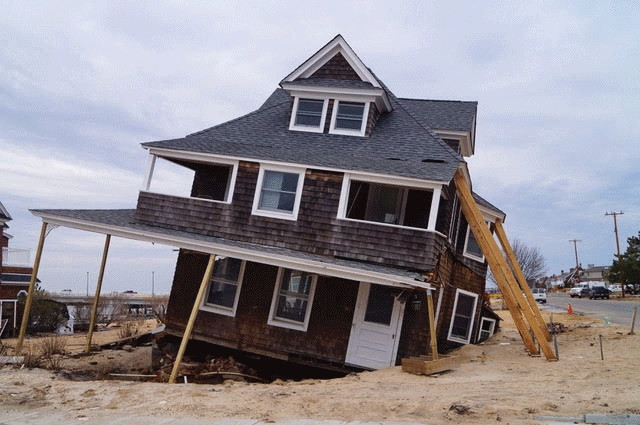
FEMA has also recommended closed-cell foam to encourage sustainable building practices in the storm-affected region. HUD (The Department of Housing and Urban Development) is wanting CDBG-DR (Community Development Block Grant Disaster Recovery) grantees to implement green building standards for replacement and new construction of residential housing.
Prior to Sandy, there was a rising interest in these types of standards in the region. Some state and local authorities were either inconsistent, or had not previously applied any energy efficiency standards.
Through the CDBG-DR notice, HUD provided a menu of standards to be applied uniformly across each jurisdiction. These standards help promote greater energy efficiency, and they advance long term affordability by reducing utility costs. Spray foam insulation is one such energy efficiency material.
Acting as a very durable and superior insulation with respect to water-resistance, spray foam acts as a protective barrier between any water trying to enter the property. The barrier also helps keep the building’s climate controlled, while providing an extra barrier against mold, which thrives in moist and humid air. In particular, closed-cell spray foam insulation helps create an air-tight barrier preventing air leakage and the possible risk of a moisture problem in any wall cavities.
Many properties in the Mantoloking area were destroyed, but there were a few that received a smaller amount of damage. The owners of these properties also needed to be aware of the serious potential risk of mold growth. Not only does it create a terrible odor and ugly looking stains, it can be potentially hazardous to a person’s health. Issues like reduced lung function and chronic asthma are real threats to people who have had lengthy exposure to mold.
Contractors also have to be aware of potential dangers from damaged materials when first entering a flood damaged home. Once anything salvageable has been cleared, then all material objects need to be removed, including carpet, vinyl tiles, saturated drywall, plaster, and swollen wall paneling. FEMA recommends placing plastic barriers between affected and unaffected areas of the building (typically between the first and second floors at the base of the stairs) to reduce the potential of mold spores spreading to unaffected areas.
Robert Monetti of Monetti Custom Homes, has been on building sites since he was five years old and after graduating high school his dad offered him a job. He took the job and was taught the intricacies of carpentry. Still using the knowledge he gained in those early years, his skills, passion, and knowledge result in his projects being more like pieces of art than just a building.
Building luxury dream homes isn’t just a job for Monetti, it's a craft perfected through planning, thought, passion and attention to detail. He is respected throughout the industry and by his clients for being a home contractor who is willing to invest time and energy into his work. The homes are truly aesthetically pleasing, tasteful, and of the highest quality.
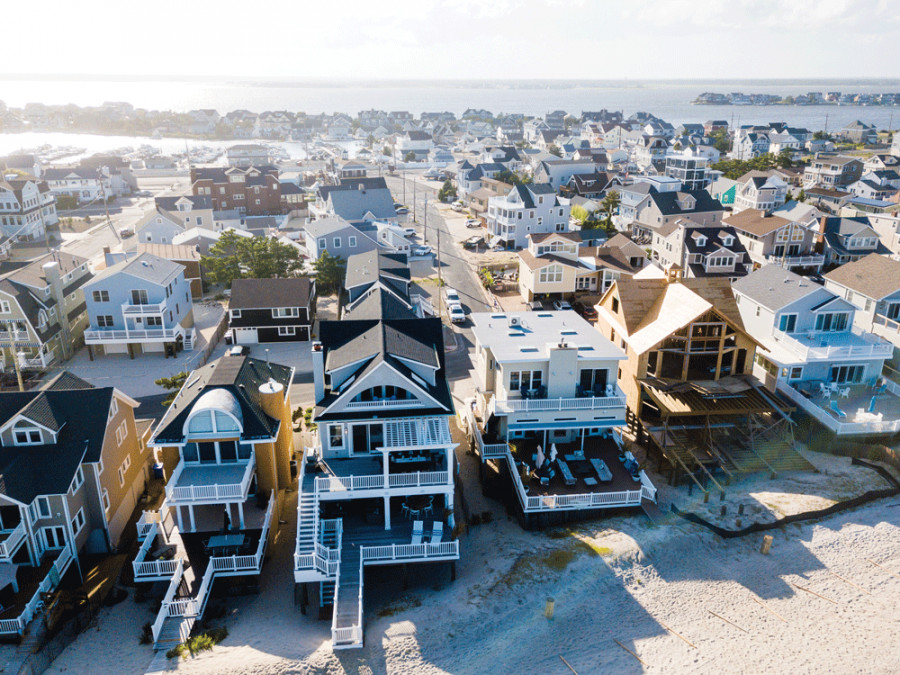
One of the quality materials Monetti uses in his projects is spray foam insulation. Monetti explains, “We at Monetti Custom Homes have been advocating for spray foam insulation for over 15 years. We find that in addition to its unparalleled insulation qualities, including gap filling etc., the product has a frequently unknown additional benefit of significantly improving sheer (side-to-side) strength. This is a very important perk when constructing high, multi-story homes with open floor plans. The foam is like adding layer upon layer of plywood sheathing so every bay space becomes a sheer panel. Finally, we also notice greater sound attenuation as well. For us, it’s spray foam every time!”
There is substantial growing evidence that climate change is happening. The most noted evidence of the change are warming waters, shrinking ice sheets, glacial retreat, decreased snow cover, rising sea levels, and extreme weather events like hurricanes. After Sandy hit, President Obama, signed the Disaster Relief Appropriations Act, 2013 (Sandy Supplemental). The Hurricane Sandy Rebuilding Strategy provided about
$50 billion in funding to support rebuilding in the region. The rebuilding strategy established guidelines for the investment of federal funds being made available to help the affected areas recover. This has set the region on the path to a stronger and smarter rebuild.
Taking FEMA’s recommendations, new building codes and the expertise of spray foam companies like Coastal Insulation and builders like Monetti Custom Homes; the New Jersey coastal towns destroyed by Superstorm Sandy are looking to a safer and once again lucrative future.


